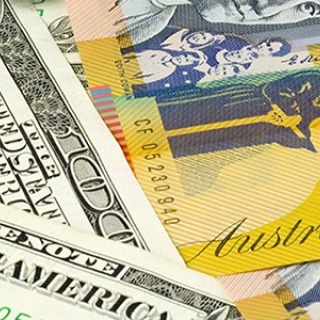


The Australian dollar (AUD) rose to around $0.656 on Tuesday, its highest level in nearly three weeks. This increase was primarily due to the weakening US dollar (greenback). US market participants await the Fed's decision on Wednesday, and many have already set expectations that the benchmark interest rate will be cut by 25 basis points. Positive sentiment regarding the possibility of a US-China trade deal has also slightly reduced demand for safe-haven assets like the US dollar, giving the AUD more room to move.
Domestically, the Australian market is now awaiting two important data: third-quarter inflation, due out on Wednesday, and the September monthly CPI. These figures will significantly influence views on the future direction of interest rates. If inflation remains high, the RBA could hold rates high for longer. If inflation begins to subside, the chances of further easing become greater.
Interestingly, the chances of an interest rate cut by the Australian central bank have dropped sharply. Currently, the market is pricing the probability at only around 15%, down from around 60% previously. Why the decline? RBA Governor Michele Bullock emphasized that Australia's labor market remains "a little tight," even though unemployment figures rose higher than the RBA's projections. This means the RBA doesn't feel the need to cut interest rates too soon. So, for now, the AUD's $0.656 is driven more by the weakness of the US dollar—not by the RBA becoming dovish. (az)
Source: Newsmaker.id
The Australian dollar strengthened against the US dollar on Wednesday, recouping the previous session's losses. This boost came from comments by RBA Assistant Governor Sarah Hunter: recent data appear...
The Australian dollar (AUD) strengthened to around 0.6530 against the US dollar (USD) in the Asian session on Monday, after falling more than 1% in the previous trading session. This strengthening occ...
The Australian dollar strengthened to around $0.657 on Friday (October 10), rebounding from a nearly two-week low. This gain came after RBA Governor Michele Bullock struck a cautious tone: services in...
Wednesday, October 8, 2025 - The Australian dollar weakened to around US$0.656, extending its decline as the US dollar continued to strengthen. Safe-haven demand for the greenback increased as the US ...
The Australian dollar (AUD) strengthened against the US dollar (USD) this morning after the latest inflation data from the TD Securities–Melbourne Institute (TD-MI) showed a higher-than-expected surge...
Gold remained weak on Tuesday, October 28, 2025, moving below $4,000 per ounce, around $3,970-$4,020, after dropping to a nearly three-week low. Selling pressure came as the market grew more optimistic about the potential for a US-China trade deal...
The Nikkei 225 closed down around 0.2% on Tuesday, October 28, 2025, after breaking a historic record the previous day, closing above 50,000 for the first time at 50,512.32. Investors appeared to be taking profits after a sharp rally fueled by the...
Silver remained weak on Tuesday, October 28, 2025, after falling to the $46-$48 per ounce range. Selling pressure arose because the global market was risk-on: sentiment regarding the US-China trade deal has caused investors to seek less safe-haven...
 European stocks continued to strengthen on Monday, October 27, 2025, as markets grew more confident after the US and China announced they had a...
European stocks continued to strengthen on Monday, October 27, 2025, as markets grew more confident after the US and China announced they had a...
 Federal Reserve policymakers are widely expected to reduce U.S. short-term borrowing costs this week by a quarter of a percentage point for the...
Federal Reserve policymakers are widely expected to reduce U.S. short-term borrowing costs this week by a quarter of a percentage point for the...
 That the US and China were nearing a trade deal triggered a cross-asset rally, lifting stocks, oil and copper along with China-exposed...
That the US and China were nearing a trade deal triggered a cross-asset rally, lifting stocks, oil and copper along with China-exposed...
 Top U.S. and Chinese negotiators said they reached a consensus on key disputes, paving the way for Presidents Donald Trump and Xi Jinping to meet...
Top U.S. and Chinese negotiators said they reached a consensus on key disputes, paving the way for Presidents Donald Trump and Xi Jinping to meet...